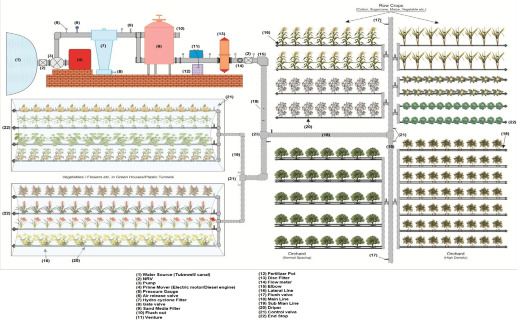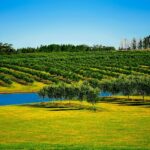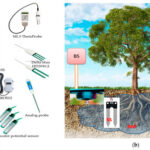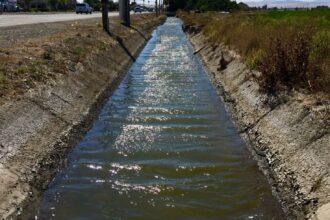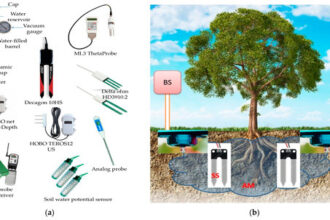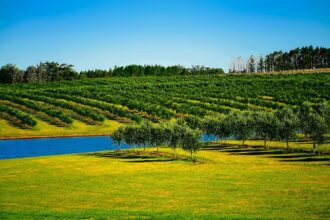Flood irrigation, one of the oldest agricultural practices, remains widely used for its simplicity and effectiveness. Despite the advent of advanced irrigation technologies, flood irrigation continues to play a crucial role in agricultural water management, particularly in regions with abundant water resources. This article delves into the mechanics, benefits, challenges, and relevance of the flood irrigation system in modern agriculture.
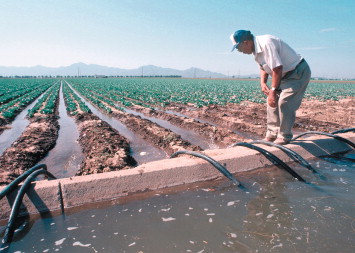
What is a Flood Irrigation System?
A flood irrigation system involves the controlled flooding of agricultural fields with water sourced from rivers, reservoirs, or canals. This method utilizes gravity to distribute water across the soil surface, saturating it to nourish crops.
How Does Flood Irrigation Work?
The process typically includes these steps:
- Water Source
- Water is diverted from a natural or artificial source, such as a river or reservoir.
- Distribution Channels
- Canals or ditches carry water to the fields.
- Field Application
- Water is released into the fields, spreading across the soil using gravity.
- Soil Absorption
- Water infiltrates the soil, hydrating plant roots.
- Runoff Management
- Excess water is drained to avoid waterlogging and is sometimes recycled.
Advantages of the Flood Irrigation System
Flood irrigation offers significant benefits:
1. Cost-Effectiveness
- Low Initial Investment: Requires basic infrastructure like canals and gates.
- Affordable Maintenance: Minimal upkeep compared to high-tech irrigation systems.
2. Simplicity and Accessibility
- User-Friendly: Farmers with minimal technical skills can implement and manage it.
- No Specialized Equipment: Reduces dependence on advanced machinery.
3. Soil Enrichment
- Salt Leaching: Prevents salinity buildup by flushing out salts.
- Deep Hydration: Ensures even moisture levels for crops with extensive root systems.
4. Groundwater Recharge
- Replenishes underground aquifers through water percolation.
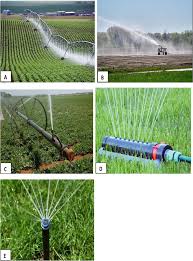
Challenges of the Flood Irrigation System
Despite its benefits, flood irrigation poses certain challenges:
1. Water Wastage
- Inefficient Use: A significant amount of water is lost through evaporation and runoff.
- Unsuitable for Dry Regions: High water demand makes it impractical in arid areas.
2. Soil and Crop Issues
- Waterlogging Risks: Excess water can drown plant roots, reducing yield.
- Erosion and Nutrient Loss: Rapid water flow can strip soil of essential nutrients.
3. Labor Intensity
- Frequent Monitoring: Requires constant supervision to ensure optimal water distribution.
- Field Preparation: Ditches and canals must be regularly maintained.
4. Limited Crop Suitability
- Not ideal for crops sensitive to standing water, such as root vegetables.
Comparison Table: Benefits vs. Challenges
| Aspect | Benefits | Challenges |
|---|---|---|
| Cost | Affordable setup and maintenance | High water costs in scarce regions |
| Ease of Use | Simple to implement and operate | Requires significant manual effort |
| Water Usage | Suitable for water-rich areas | Inefficient in water-scarce regions |
| Soil Impact | Enriches soil through leaching | Risk of erosion and nutrient depletion |
Flood Irrigation in Modern Agriculture
Applications
Flood irrigation remains relevant in:
- Rice Cultivation: Thrives in water-saturated fields.
- Pasture Lands: Suitable for growing grass and forage crops.
- Sugarcane Farming: Requires extensive water supply.
Technological Integration
Farmers are incorporating modern techniques to improve efficiency:
- Automation: Automated gates and sensors optimize water flow.
- Laser-Leveling: Ensures even field surfaces for uniform water distribution.
- Recycling Systems: Captures runoff for reuse, reducing water wastage.
User Feedback: Real-Life Insights
Positive Experiences
- “Flood irrigation works perfectly for my rice fields. It’s cost-effective and reliable.” – Hassan, Pakistan
- “By integrating automated gates, we’ve managed to reduce water wastage significantly.” – Clara, Argentina
Challenges Shared
- “Soil erosion is a major concern, especially during heavy rains.” – Miguel, Mexico
- “Managing water flow across uneven fields requires extra effort and planning.” – Anita, India
How to Optimize Flood Irrigation
To maximize the benefits and minimize drawbacks, follow these tips:
- Level the Land: Use laser technology to create uniform fields.
- Install Efficient Gates: Control water flow precisely to avoid wastage.
- Monitor Water Usage: Regularly inspect canals and ditches for leaks.
- Recycle Runoff: Implement systems to collect and reuse excess water.
- Use Soil Amendments: Enhance soil structure to improve drainage and nutrient retention.
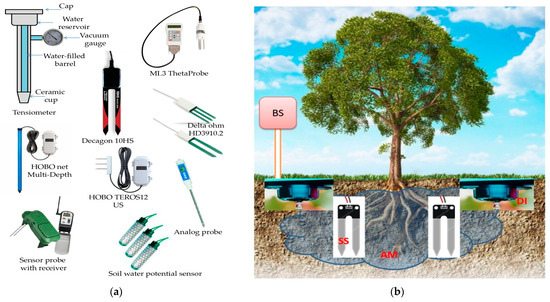
Conclusion
Flood irrigation is a time-honored practice with undeniable advantages, especially for specific crops and regions with ample water supply. While its simplicity and affordability make it an attractive option, its inefficiencies and potential environmental impacts require careful consideration.
By combining traditional methods with modern technology, farmers can harness the benefits of flood irrigation while addressing its challenges, ensuring sustainable water management and agricultural productivity.
